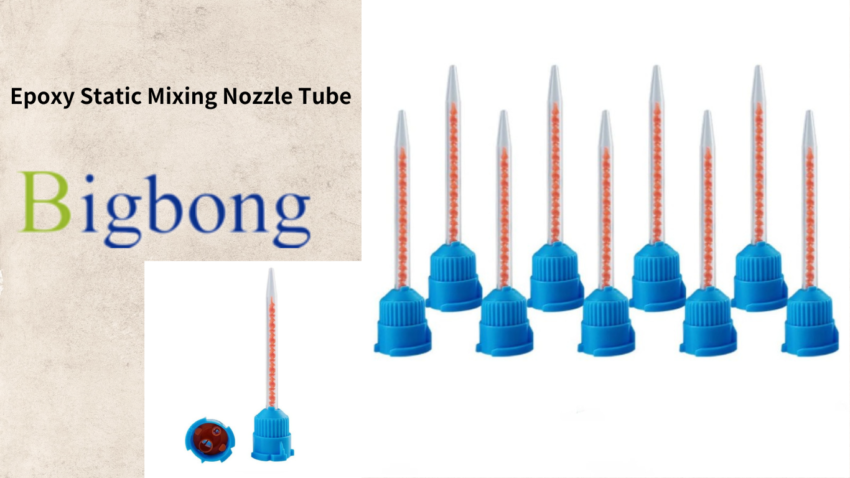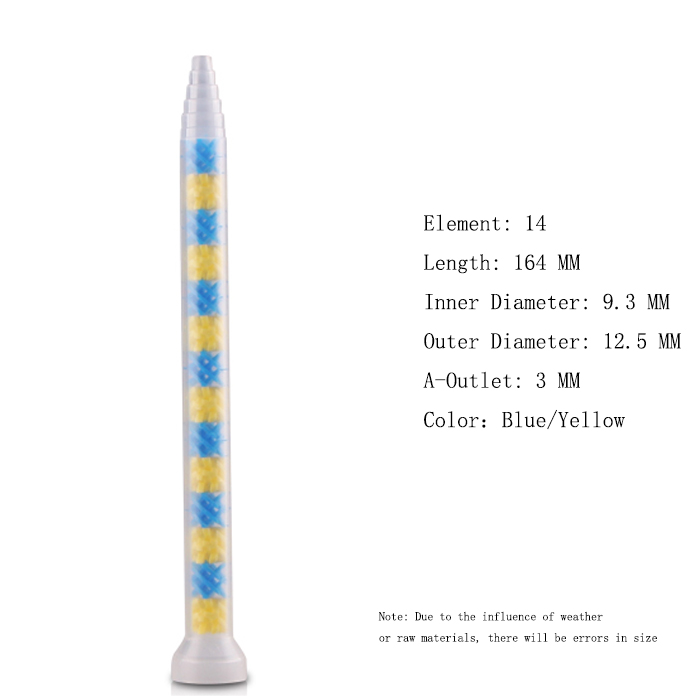
Static mixing nozzles are an essential component in the process of mixing two or more fluids. They are commonly used in various industries such as chemical, petrochemical, pharmaceutical, and food processing. Static mixing nozzles are known for their efficiency, durability, and low maintenance cost, which makes them a popular choice in many industrial applications.
This article will discuss static mixing nozzles, their types, applications, and benefits. We will also explore how static mixing nozzles work and the factors that affect their performance. Furthermore, we will cover the advantages of using static mixing nozzles over traditional mixing methods, and the future of static mixing technology.



I. Types of Static Mixing Nozzles
There are different types of static mixing nozzles available, and each type has unique characteristics that make it suitable for specific applications. The following are some of the most common types of static mixing nozzles:
- Helical Static MixersHelical static mixers are designed with a twisted geometry that causes the fluid to rotate around the central axis of the mixer. This type of mixer is ideal for low to medium viscosity fluids and is commonly used in the food, chemical, and pharmaceutical industries.
- Kenics Static MixersKenics static mixers are designed with a series of baffles that create a back-and-forth flow pattern, ensuring uniform mixing. They are suitable for high viscosity fluids and are commonly used in the polymer, adhesive, and paint industries.
- Tab Static MixersTab static mixers consist of a series of flat metal strips that are arranged in a crisscross pattern. They are suitable for low viscosity fluids and are commonly used in the water treatment, chemical, and food processing industries.
- F Series Static MixersF series static mixers are designed with a series of inclined plates that create a series of vortices, promoting the mixing of fluids. They are ideal for high viscosity fluids and are commonly used in the chemical and petrochemical industries.
II. Applications of Static Mixing Nozzles
Static mixing nozzles have a wide range of applications in various industries. Some of the common applications of static mixing nozzles include:
- Chemical ProcessingStatic mixing nozzles are commonly used in the chemical processing industry for the mixing of chemicals, acids, and solvents.
- Food ProcessingStatic mixing nozzles are used in the food processing industry for the mixing of ingredients, such as flavorings, colorings, and preservatives.
- Water TreatmentStatic mixing nozzles are used in the water treatment industry for the mixing of chemicals, such as chlorine and fluoride, into the water.
- PharmaceuticalStatic mixing nozzles are used in the pharmaceutical industry for the mixing of active ingredients and excipients.
- Adhesive and SealantsStatic mixing nozzles are used in the adhesive and sealant industry for the mixing of two-part adhesives and sealants.
III. Benefits of Static Mixing Nozzles
Static mixing nozzles offer several benefits over traditional mixing methods. The following are some of the advantages of using static mixing nozzles:
- Consistent MixingStatic mixing nozzles provide consistent mixing, resulting in a uniform product.
- Low MaintenanceStatic mixing nozzles are low maintenance, reducing downtime and maintenance costs.
- High EfficiencyStatic mixing nozzles are efficient, reducing the time and energy required for mixing.
- Cost-effectiveStatic mixing nozzles are cost-effective, reducing the cost of production.
IV. How Static Mixing Nozzles Work
Static mixing nozzles work on the principle of flow division and radial mixing. When two or more fluids are introduced into the static mixing nozzle, they are divided into multiple streams, and the streams are then forced to mix as they flow through the nozzle. The mixing occurs due to the presence of various elements within the nozzle, such as baffles, plates, and tabs.
As the fluids flow through the nozzle, they are exposed to different elements, which cause the fluids to interact and mix. The design of the static mixing nozzle determines the mixing pattern and the degree of mixing achieved. Different types of static mixing nozzles produce different mixing patterns, such as laminar, chaotic, or turbulent mixing.
V. Factors Affecting the Performance of Static Mixing Nozzles
Several factors can affect the performance of static mixing nozzles. The following are some of the key factors that can affect the efficiency of static mixing nozzles:
- ViscosityThe viscosity of the fluids being mixed affects the degree of mixing achieved. High viscosity fluids require a different type of static mixing nozzle compared to low viscosity fluids.
- Flow RateThe flow rate of the fluids being mixed can affect the degree of mixing achieved. If the flow rate is too high, it can reduce the mixing efficiency.
- Reynolds NumberThe Reynolds number is a measure of the flow regime of the fluids being mixed. It is important to choose the right type of static mixing nozzle based on the Reynolds number of the fluids.
- Mixing TimeThe mixing time required can vary depending on the type of fluids being mixed and the desired degree of mixing.
VI. The Future of Static Mixing Technology
The use of static mixing nozzles is becoming more prevalent in various industries, and the technology is continually evolving. Some of the current trends in static mixing technology include the use of computational fluid dynamics (CFD) to optimize the design of static mixing nozzles and the integration of static mixing nozzles into automated production systems.
Furthermore, there is a growing interest in the development of new materials and coatings for static mixing nozzles, which can improve their durability and resistance to corrosion. There is also a focus on the development of more sustainable and eco-friendly materials for static mixing nozzles, which can help reduce the environmental impact of industrial processes.
VII. Conclusion
Static mixing nozzles are an essential component in many industrial processes, offering several benefits over traditional mixing methods. They provide consistent mixing, are low maintenance, efficient, and cost-effective. There are different types of static mixing nozzles available, each with unique characteristics suitable for specific applications.
Several factors can affect the performance of static mixing nozzles, such as viscosity, flow rate, Reynolds number, and mixing time. The future of static mixing technology is promising, with ongoing research and development focused on optimizing the design of static mixing nozzles and developing more sustainable and eco-friendly materials for their production.
Share on facebook
Share on twitter
Share on linkedin
Share on pinterest
Share on whatsapp